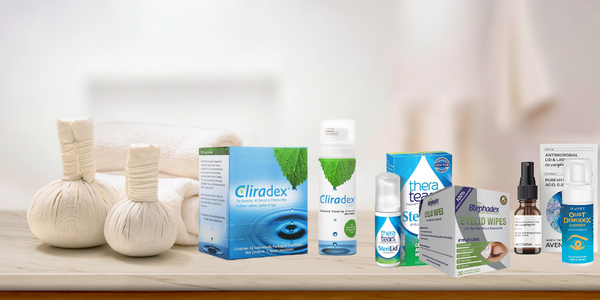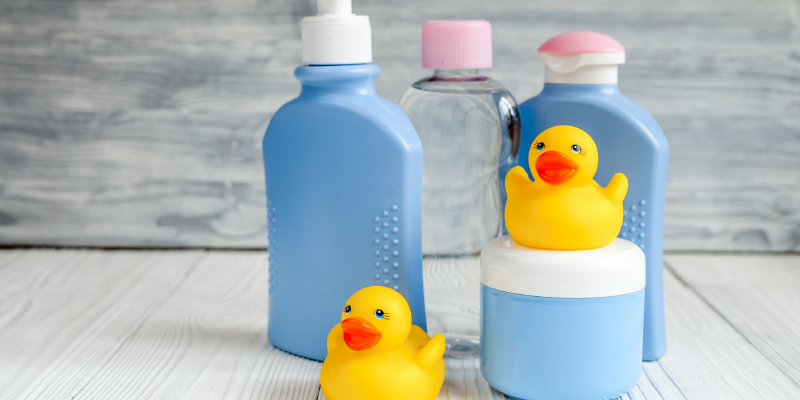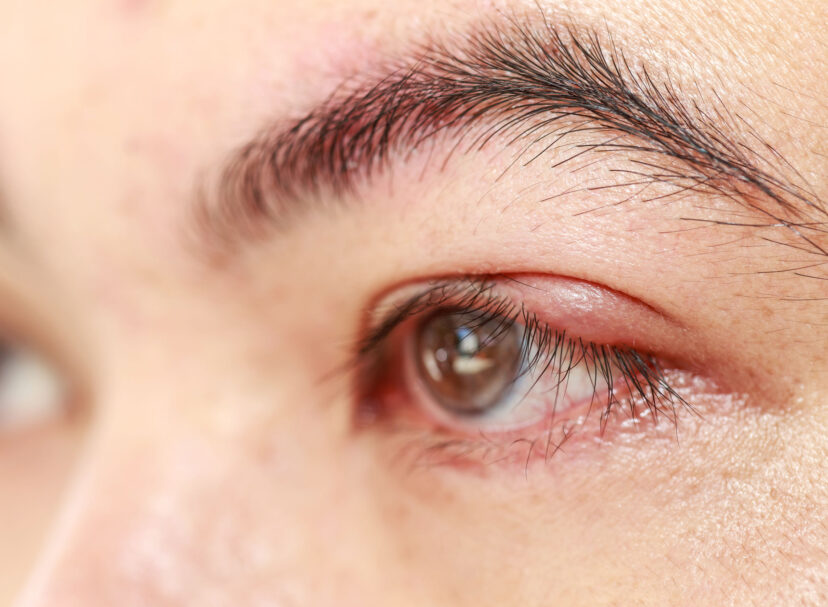There is very little that is harder to grin and bear than irritated eyes. They burn, sting, water, are light sensitive and the more you try to make them feel better the worse it seems to get. There are eye irritants and there are more of them than you think lurking around your house. Well, maybe they are not actually lurking – as what they are is largely inanimate; but they are surely just waiting for you, a pet, or a child to make a wrong move and get them in the eye.
The eye is an exceptionally sensitive organ and it is quite prone to irritation. Some people’s eyes are more sensitive than others. But everyone’s eyes will react poorly to being exposed to particular harsh and abrasive stuff you find in your home. Some of these may surprise you, but it is good to be aware of them so that you keep yourself safe and your vision intact.
Commonly Injured Parts of the Eye

Your eyes include many components, each of which has a distinct function that works in conjunction with the rest of the eye, playing a part in good vision or contributing to vision issues, and is subject to irritation. The most often affected parts include:
- Eyelid
- Cornea
- Sclera
- Conjunctiva
The American Academy of Ophthalmology is an excellent resource on the eye and what can go wrong with it, as pointed out on their website:
To understand the diseases and conditions [including injury] that can affect the eye, it helps to understand basic eye anatomy. Here is a tour of the eye starting from the outside, going in through the front and working to the back.
The eye sits in a protective bony socket called the orbit. Six extraocular muscles in the orbit are attached to the eye. These muscles move the eye up and down and side to side, and rotate the eye.
The extraocular muscles are attached to the white part of the eye called the sclera. This is a strong layer of tissue that covers nearly the entire surface of the eyeball.
The surface of the eye and the inner surface of the eyelids are covered with a clear membrane called the conjunctiva… Light is focused into the eye through the clear, dome-shaped front portion of the eye called the cornea.
Behind the cornea is a fluid-filled space called the anterior chamber. The fluid is called aqueous humor. The eye is always producing aqueous humor. To maintain a constant eye pressure, aqueous humor also drains from the eye in an area called the drainage angle.
The entire eye is additionally protected by the eyelids, which are rimmed with eyelashes that work together to keep foreign objects from entering the eye. The eyelid is a fold of skin that closes over the entire eye.

Common Eye Injuries

Injuries to the eye are incredibly common and when left untreated many of them can cause extensive vision issues, up to and including blindness. Injuries can range from very minor if they are caught and treated right away to life threatening. The most minor usually involve getting a small amount of an otherwise innocuous irritant in the eye. Many injuries occur in the home, some occur in the workplace and others while playing sports or otherwise enjoying life.
According to EMedicineHealth.Com’s guide to eye injury first aid, the causes of eye injuries include:
- Chemical burns. These can come from irritants or stronger acids or alkalis that are caustic and can cause immediate, severe and permanent damage. Any sort of caustic substance that you are working with can splash into your eyes if you are not careful. If you rub your eyes when you are working with chemicals you can inadvertently transfer the substance into your eyes. Also when using anything that sprays, spritzes, or is an aerosol, you run the risk of some of the substance contacting your eyes.
- Subconjunctival hemorrhage. The sclera has blood vessels laying over it that are inside of the conjunctiva. This bleeding can happen with any injury to the eye, or spontaneously without any apparent trauma.
- Corneal abrasions. This can range from a scratch to a more traumatic ‘defect’ on the corneal surface.
- Traumatic Iritis. This is like a corneal abrasion, but usually occurs due to blunt force trauma, rather than a scratch or cut. Iritis is the inflammation of the iris.
- Hypemas. This occurs due to bleeding in the anterior chamber.
- Lacerations. Cuts can occur to the eyelid or conjunctiva, as well as to the cornea and sclera. Any laceration to the interior of the eye is a medical emergency and should be treated as one.
- Foreign bodies in the eye, which can embed in the cornea (non-penetrating) or in the eye socket (non-penetrating), or interocular, which have penetrated the eye and are lodged in it.
- Ultraviolet keratitis. This is corneal flash burn, or sunburn of the cornea that can occur due to exposure to UV light, generally at high altitudes. It is distinguished from solar retinopathy which is damage that occurs in the central retina from staring at the sun.
With so many ways to do damage to the eye it seems a wonder that any of us are not injured. Many of these injuries, however, do not come from everyday activity. Rather they occur because of accidents or taking chances, such as in the case of workplace injuries that could have been prevented with protective eye gear. The others, nearly half that are reported by hospitals, urgent care centers, and doctors, happen around the house. Keep in mind that many of these are injuries from force or flying objects, not irritants. However there are a significant number of eye injuries from irritants that do occur from common every day household items. When those injuries occur, you will want to be ready. Cliradex can help.
Common Household Eye Irritants

Many things that you likely have laying around the house can cause irritation if they get into your eye. These range from common household cleansers to hygiene products, to children’s and pet’s toys. 7 of the most common of these are:
- Soaps. Everything from dish soap to hand soap to body wash and shampoos, unless formulated to be ‘tearless’ for small children, soap is almost always an irritant. Soaps are largely alkaline and the eyes cannot tolerate this, as they are balanced with a neutral (7) pH versus the soaps’ 7.5 to 9. The impact of this on the eye causes the eye to start tearing, which is a reflexive response designed to help remove foreign objects. The eye’s blood vessels enlarge and come closer to the surface of the eye to help, which makes them look red. There is usually stinging that occurs as well. Soaps are usually tested for toxicity before they are sold for household use, so in most cases the irritation will go away as soon as the eye is sufficiently flushed with cool water and saline. Cliradex Light Foaming Cleanser can be used to help eliminate the irritation.
- Household Cleansers. Many commercial cleansers contain ingredients that can cause an allergic reaction, leading to eye irritation. The most common allergens include triclosan, ammonia, hydrochloric acid, formaldehyde, and BPA. Any allergic reaction is best treated by removing the allergen from the environment and then tending to the irritation. As with soap, flushing with water and using Cliradex with its soothing properties may help. However, in the case of direct contact or a more severe burn it may be necessary to seek medical attention.
- Glo-Sticks. Non-toxic but caustic is how emergency rooms describe the contents of glo-sticks. They burn and irritate and require flushing with saline, but there is generally no long-term damage to the eye. These are most commonly encountered by children, as they tend to leak and break. Flushing and Cliradex can help this as well.
- Sunscreen. Depending on the ingredients in sunscreen it can cause any reaction from mild irritation to a burn that needs to be seen by a medical doctor. Some sunscreens are safe to use around the eyes, and others emphasize avoiding the eye area entirely. If sunscreen gets in your eyes, flush and read the instructions.
- Insecticides and insect repellant. These can cause significant damage because they contain compounds that range from irritating to toxic. It is exceptionally important that when you are handling or applying these chemicals you are careful to avoid the eye area. Flush your eyes and call poison control if they do get in your eyes.
- Cosmetics. Generally speaking cosmetics are non-toxic, though they may be irritating if they get in the eye. Unless a particle becomes lodged, flushing and using Cliradex should take care of any irritation. However, do not assume that this will resolve on its own, because makeup in the eye can cause an infection.
- Air Conditioning. Air conditioning dries out indoor air, which in turn can dry the eye surface, causing irritation. In the case of this irritant, using artificial tears can help you stay comfortable indoors during the hot summer months. If irritation occurs, then Cliradex can help
Cliradex is the number one doctor recommended solution. It is soothing, non-toxic, vegan and gluten free. It is safe to use daily and can help make your eyes less irritated when they encounter things around the house that trigger a reaction.





